

Typos (First Edition)

| Home | Tell the Author | Typos | Getting the Book | For Teachers |
I shall post here the typos in the book that are known to me. To report a typo, click here.

Page xxi: defining a prime...
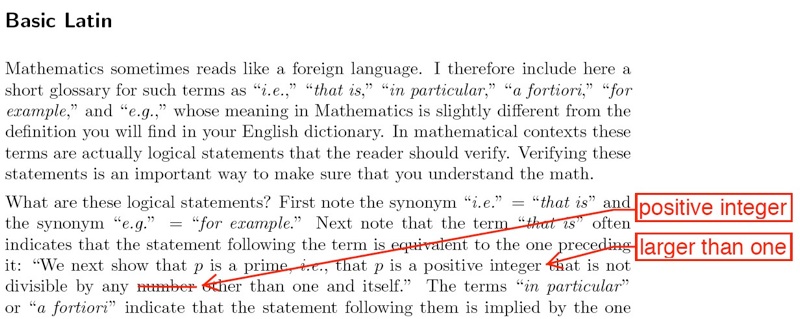

Page 35: after (4.25) — better wording
Page 35, after Equation (4.25), replace “provided that neither u nor v is zero” with “provided that neither u nor v is of zero energy”.


Page 92: after (6.75)
If f is larger than W1 + W2, then the integrand in (6.75) is zero throughout the range of integration and the integral is thus zero.


Page 98: delete 2 \pi in (6.90c)
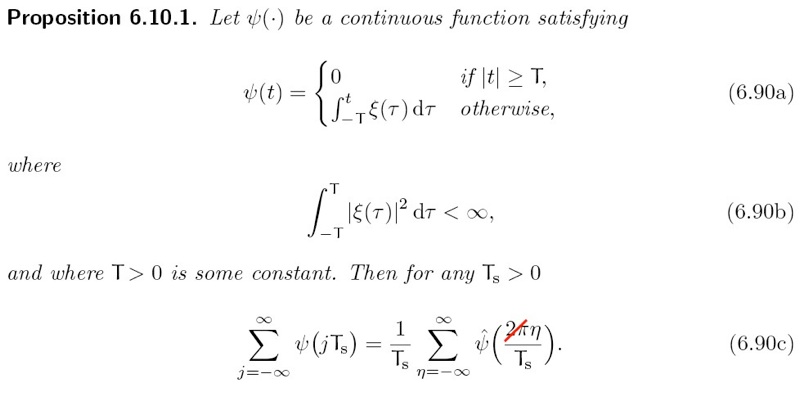

Page 122: Equations (7.41a) and (7.41b)
The cutoff frequencies of the lowpass filters should be Wc and not half of Wc.


Page 133: Proposition 7.7.2(ii)
To the assumptions of Proposition 7.7.2(ii) add that fc > W/2 > 0.
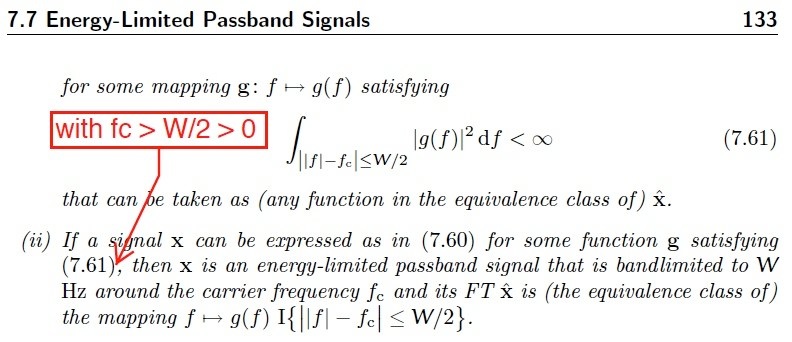

Page 144: Footnote 1
1. Add “from the subspace” after the word “functions” in the first line.
2. Before the period ending the first sentence of the footnote add “and such that a linear combination of a finite number of functions in the collection can be the all-zero function only if the coefficients are all zero”.
3. Delete the word “only” from the last sentence of the footnote.
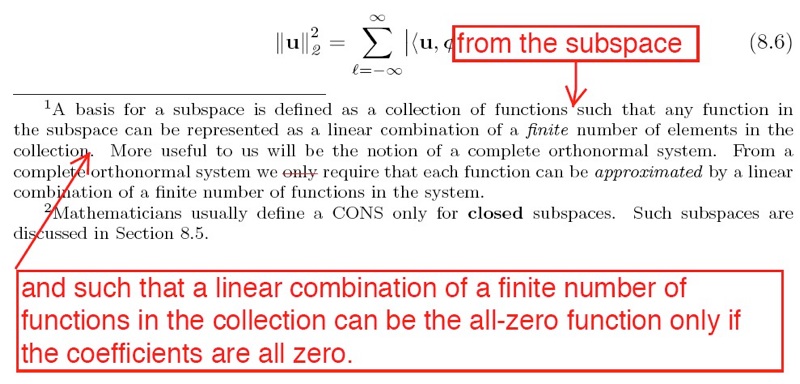

Page 177: incorrect reference
On page 177, in the last line of the paragraph following Equation (10.17), I mistakenly referenced Equation (10.14). I should have referenced Equation (10.12).
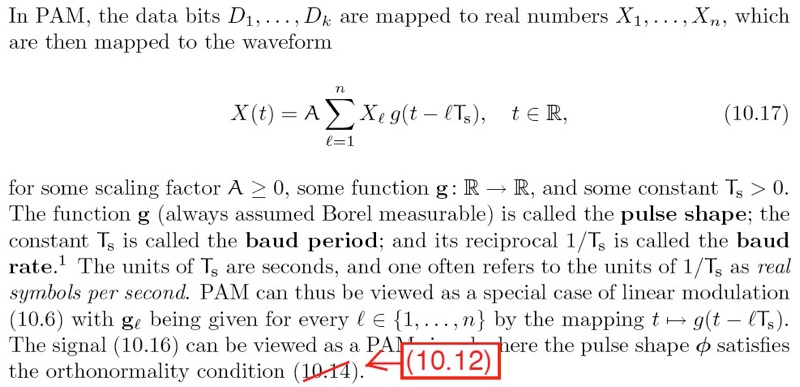

Page 183: Exercise 10.5 (i) — missing x_l
In the displayed equation of Exercise 10.5 (i) on page 183 please add “x_l” between the sum and the sinc.
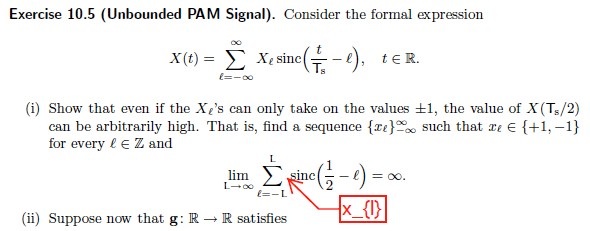

Page 197: Equation (11.31) off by a factor of 2
The numerator of the first fraction in Equation (11.31) should be 4β, i.e., four times the roll-off factor and not twice. The top plot of Figure 11.5 needs to be scaled accordingly.
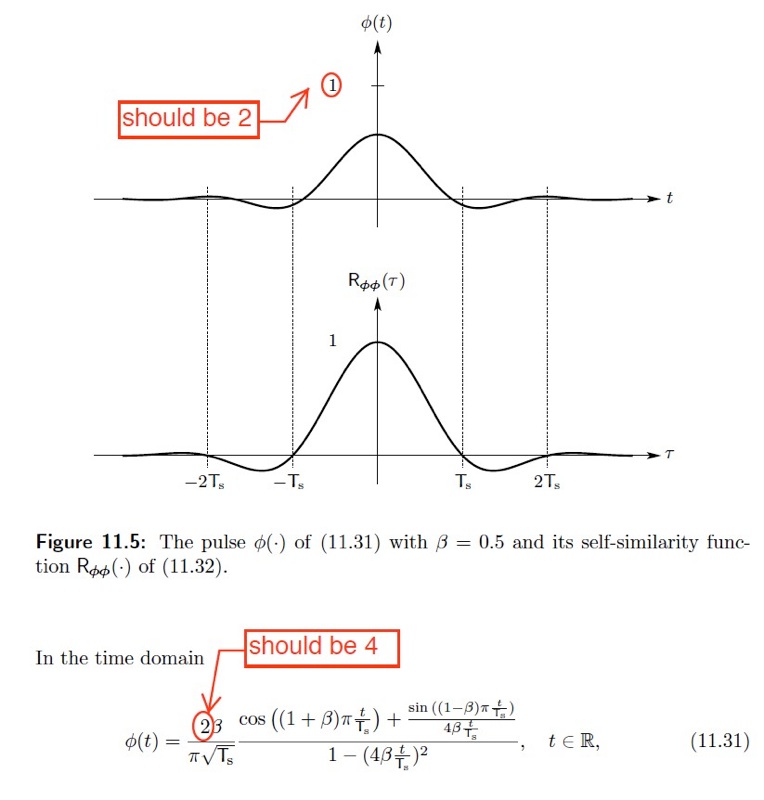

Page 217: “positive definite function”
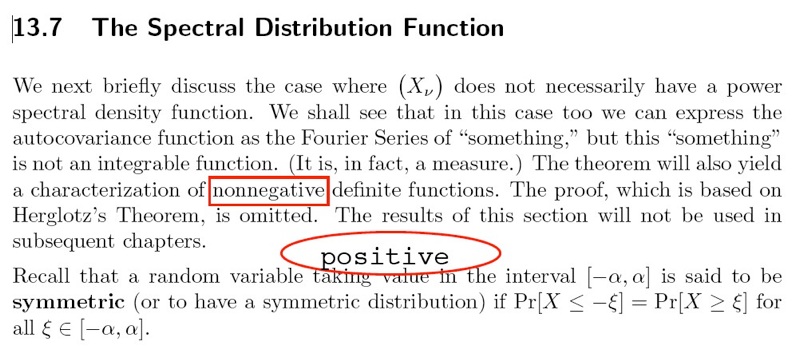

Page 231: lower limit of integral
Page 231, the three-line displayed equation above the beginning of Section 14.5.3: The integral in the middle equation should be from -T to T (and not from T to T as printed).
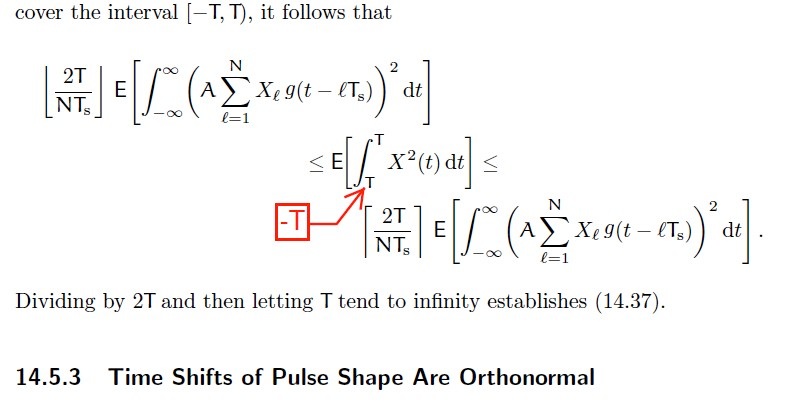

Page 241: Exercise 14.1
In the last two lines of the exercise the two stochastic processes were mistakenly referred to as X^(1)(t) and X^(1)(t) instead of X^(1)(t) and X^(2)(t).
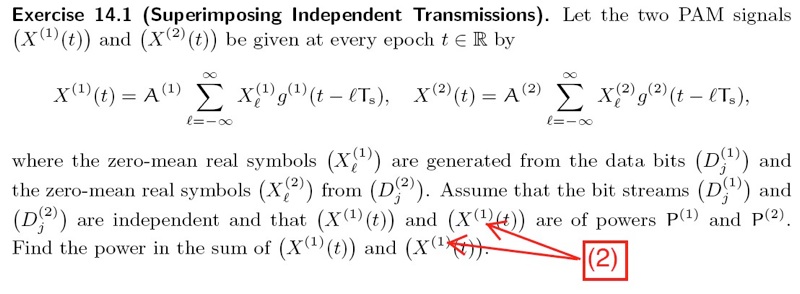

Page 243: Exercise 14.7 — an additional assumption
In Part (ii) of Exercise 14.7 one should add the assumption that neither Column l nor Column l’ is all-zero. More precisely, the statement that “X_l and X_l’ are independent” is equivalent to the statement that “the l-th and l’-th columns differ or one of them is all-zero.”


Page 244: Exercise 14.11 (iii)
For Part (iii) assume that the summability condition of Part (ii) is satisfied. This should also be assumed in Exercise 14.12.


Page 244: Exercise 14.12
Assume in this exercise the setting of Exercise 14.11 with the summability assumption of Exercise 14.11 (ii). Let G be the function in Exercise 14.11(ii). By Exercise 14.11 (ii), G is continuous. Consequently the supremum on the RHS of (14.80) can be replaced by a maximum, and there is no need to assume continuity in Part (ii).


Page 252: better reference + “continuous”
Replace “by Theorem 25.13.2” with “by Proposition 25.7.1 and Theorem 25.14.3” and replace “integrable autocovariance functions” with “continuous and integrable autocovariance functions.”
Proposition 25.7.1 guarantees that the autocovariance function can be expressed as the IFT of some integrable function (the FT of the autocovariance function) and Theorem 25.14.3 guarantees that the power in the result of feeding the SP to a stable filter has the right form.
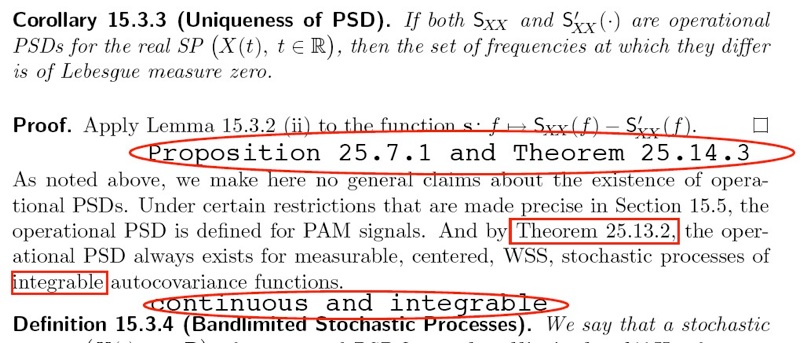

Page 262: missing “Ts” above (15.44)
On Page 262, in the last line of the derivation above (15.44) there is a missing “Ts”: one should multiply (\eta - \eta’) by Ts.
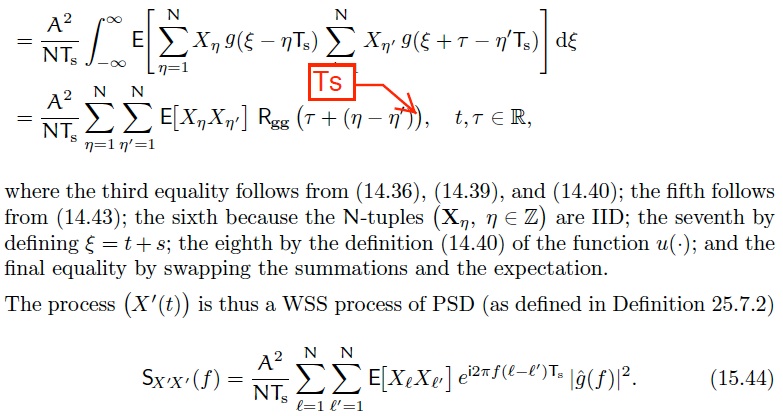

Page 280: Exercise 16.2 — missing parentheses
Missing parentheses: the constant W should multiply (t - l Ts).


Page 281: Exercise 16.7, W→W/2
Page 281, Exercise 16.7, the displayed equation: The cutoff frequency of the LPF should be W/2 and not W. (Actually, either would work, but W/2 is compatible with the text before the equation.)
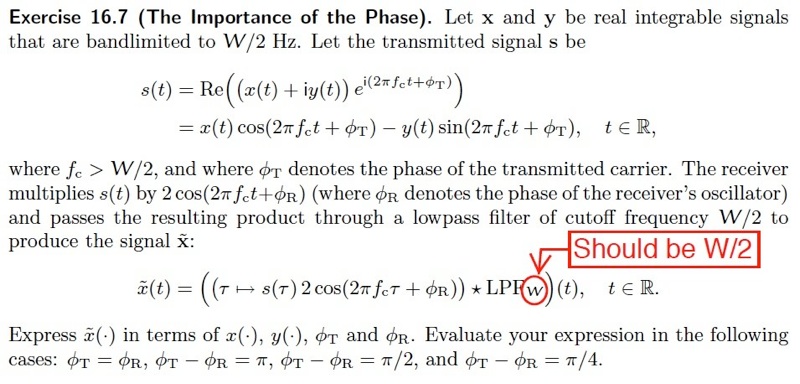

Page 290: Lemma 17.3.5
In the first displayed equation of Lemma 17.3.5 it is R that is nonnegative, and not Z.


Page 302: third line from the top
On page 302, in the third line, after “Fejer kernel (Definition A.1.3)” add “and the convolution is the periodic one of (A.6)”.


Page 303: Equations (17.70) and (17.71)
In both (17.70) and (17.71) a minus sign is missing in the exponent.
I thank Markos Troulis for pointing this out to me.
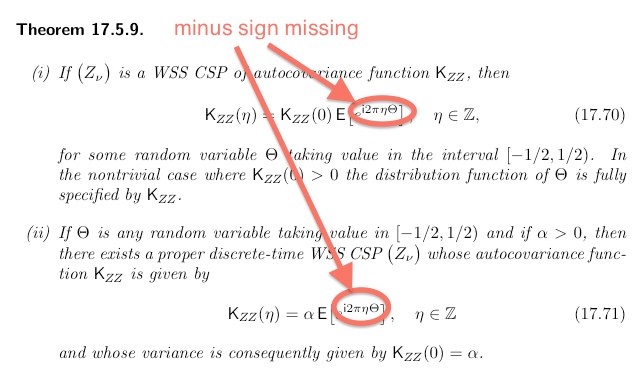

Page 313: Equations (18.35) and (18.36)
On page 313, Equation (18.35) there is a missing integral (from minus infinity to plus infinity) after the expectation operator , i.e., immediately after the left square bracket.
In Equation (18.36) the denominator should be “N Ts” and not just “N”.


Page 318: Equation (18.50) missing “minus”
On page 318, Theorem 18.4.3, Equation (18.50) there should be a “minus sign” in the exponent before the “i two pi”.


Page 319: Equations (18.51) and (18.52)
On page 319 in both Equation (18.51) and (18.52) the denominator should be “N Ts” and not just “N”.
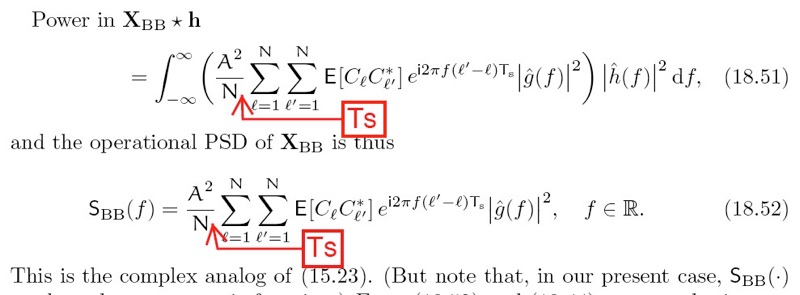

Page 320: Theorem 18.4.4, Equation (18.53)
In Equation (18.53) of Theorem 18.4.4 on page 320, one should add a “minus sign” before the “i 2 pi” in the exponent (or swap “l” with “l prime”).


Page 321: “t” should be “tau” (twice)
Page 321, third line from the bottom: in the mathematical formula replace “t” with “tau” (the dummy argument).
Likewise in the last line of Page 321.
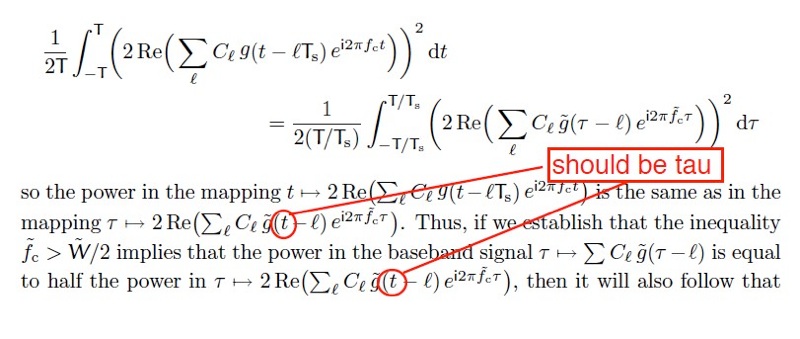

Page 322: second line — missing factor of 2
Page 322, second line. In the mathematical equation there should be a factor of 2 in front of the Re() operator.


Page 325: displayed equation after (18.78)
Page 325, the chain of (in)equalities following (18.78):
first line: the dummy variable is “t” and not “f”;
third line: replace “d t” with “d \tau”.
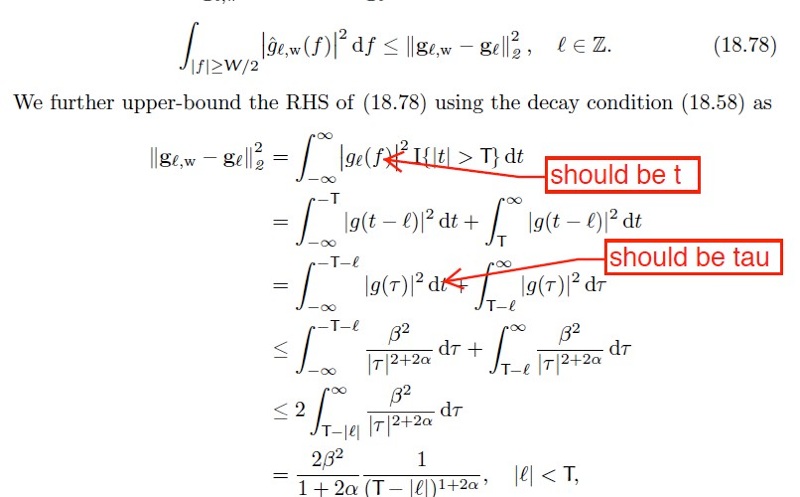

Page 326: first case of (18.80) — missing 2
Page 326, the RHS of (18.80), the top case (when $\alpha \neq 1/2$): Missing factor of 2 inside the square root.
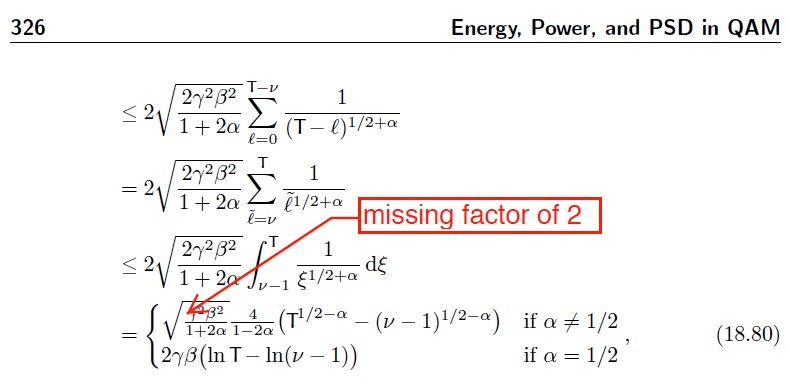

Page 354: after Note 19.8.2
After Note 19.8.2 on page 354 in the first sentence of the paragraph ending with Equation (19.45) the clause “of the squares” is missing. The sentence should read:
The distribution of the sum OF THE SQUARES of n independent unit-variance Gaussians whose squared means sum to....
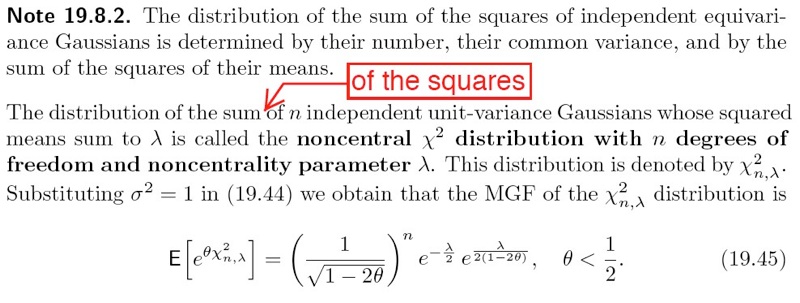

Page 355: Proposition 19.8.3 — indices
Page 355, Proposition 19.8.3: In the text of the proposition the indices should be 0 and 1 instead of 1 and 2. Thus, replace \xi_{1}, \xi_{2} with \xi_{0}, \xi_{1} and also replace \lambda_{1}, \lambda_{2} with \lambda_{0}, \lambda_{1}. No need to change the equations.


Section 20.14.3 — imperfect notation
The notation in Section 20.14.3 is not ideal. Since the decision rule derived in Section 20.14.2 is not the MAP rule (because it does not resolve ties at random), I should not have denoted the conditional probabilities of error associated with it using the MAP subscript. It would have been best to delete the subscript “MAP” throughout Section 20.14.3.
(Technically this is not an issue, because in this problem the probability of a tie is zero.)
Page 396: a better reference
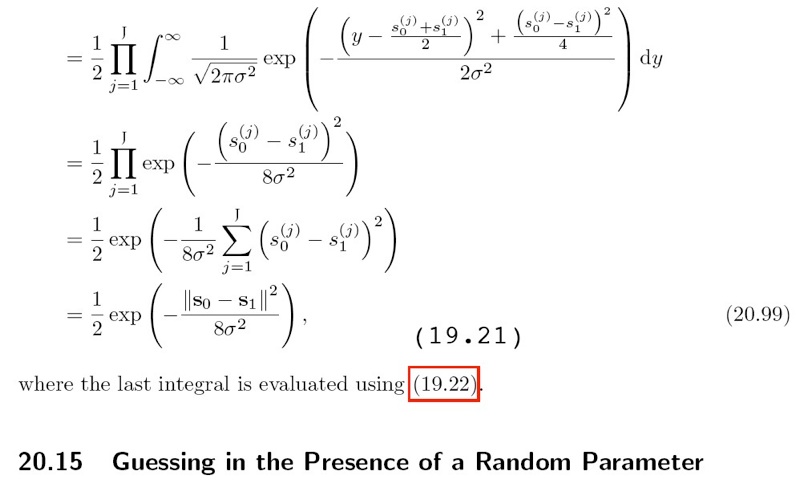

Page 398: Exercise 20.1 — Z is independent of H
In Exercise 20.1 on Page 398 the random variables Z and H are independent.
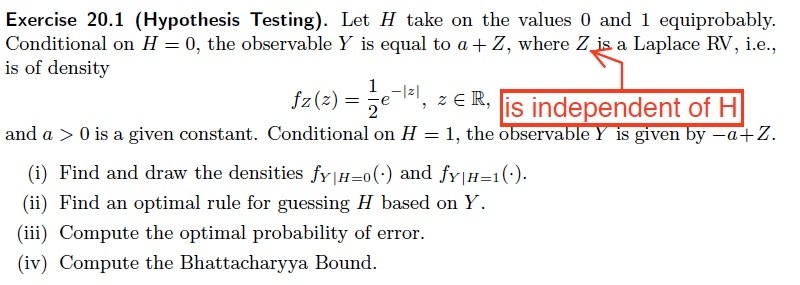

Page 445: above Proposition 22.4.4
There is a typo in the equation above Proposition 22.4.4 on Page 445: the normalization is missing. The missing terms are displayed in red in the photo.
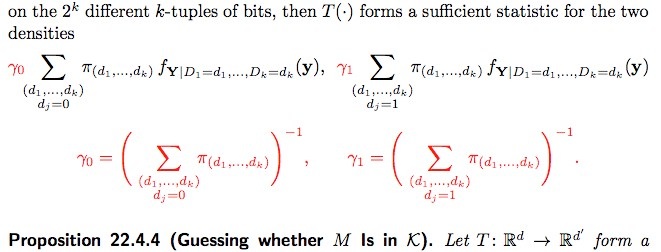

Page 445: Proposition 22.4.4 — normalization
In the statement and proof of Proposition 22.4.4 on page 445 the normalization is missing. See the terms in red in the photo.
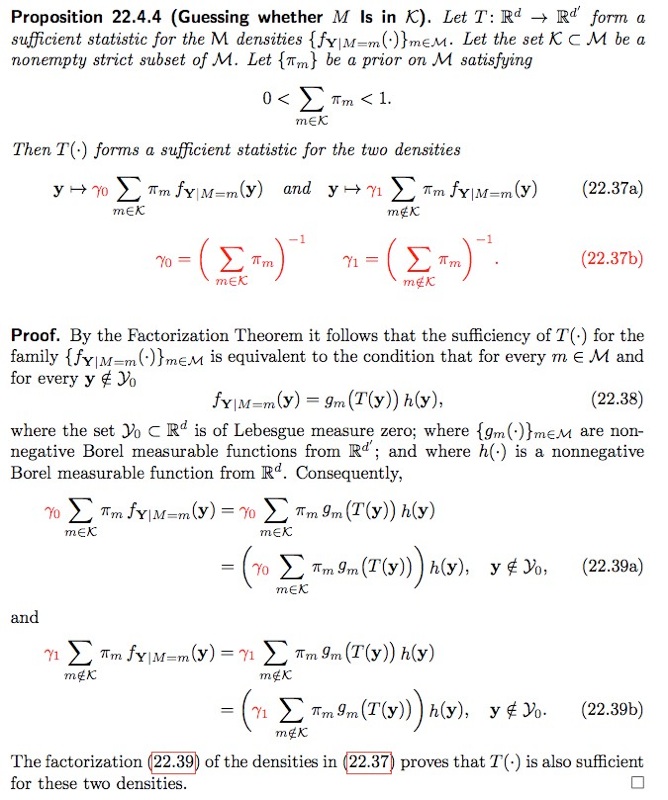

Page 446: Note 22.4.5 — normalization
In the statement of Note 22.4.5 on page 446 the normalization is missing. See the terms in red in the photo.
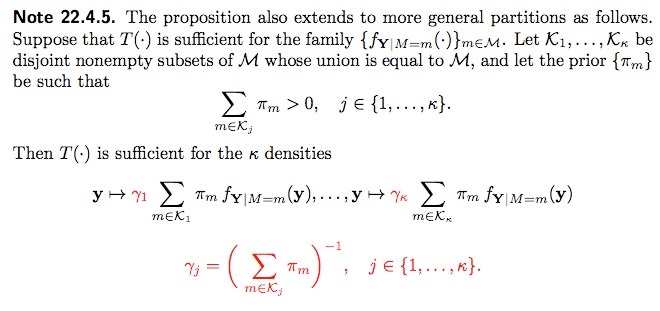

Page 450: add “for any prior on M”
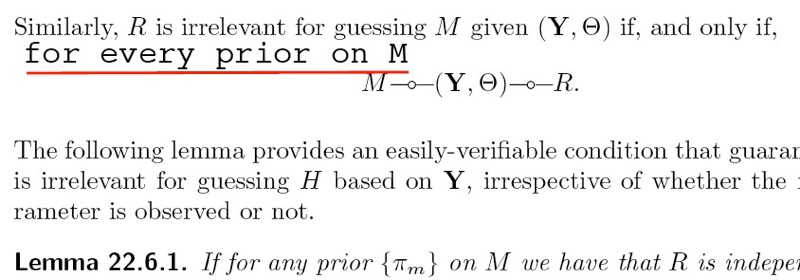

Page 453: Exercise 22.9, Part (i)
In Part (i) of Exercise 22.9 on Page 453, replace “T” with “(T,\Theta)”.
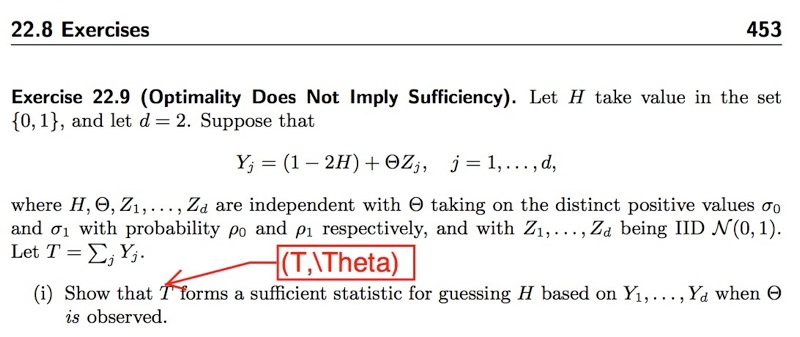

Page 472: the n’s should be m’s
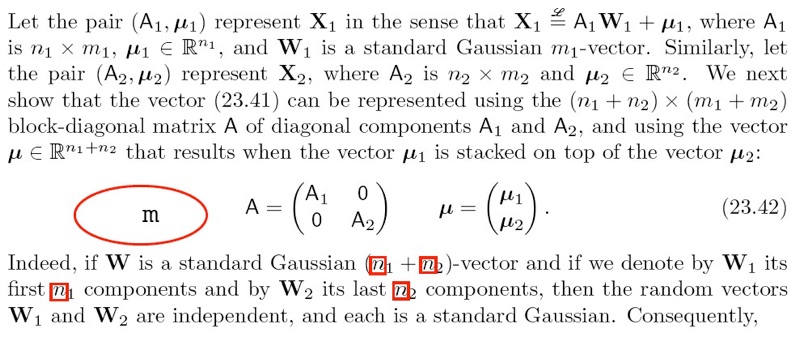

Page 474: 7th line of Sec. 23.6.2
On Page 474 on the seventh line of Section 23.6.2 replace “A X + \mu” with “A W + \mu”.


Page 477: a better reference


Page 523: proof of Proposition 25.7.1
Page 523, proof of Proposition 25.7.2. Refer to Lemma 1 in Section 2 of Chapter XIX of Feller; not Lemma 2.
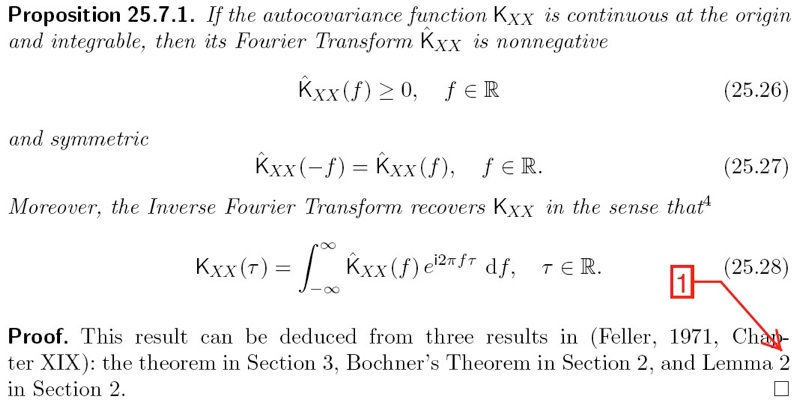

Page 563: Footnote 2
The mapping is from Ω to the set of message. Not from the sample paths.
Alternatively, we can define it from the sample-paths, but then we must say that the composition of the mapping from Ω to the sample-path and the mapping from the sample-path to the guess must be measurable with respect to the sigma-algebra generated by the cylindrical sets of Y.


Page 565: incorrect reference
On Page 565, four lines above Equation (26.7) I reference an exercise in Halmos. The section number should be 13 and not 14. The exercise is Exercise (8) in Section 13.


Page 593: last sentence — wrong reference
Page 593, last sentence. The sentence should begin with “As we argued in Section 14.4” and not “As we argued in Section 14.3”.


Page 603: wrong reference
On Page 603, eleven lines about Note 26.12.6 the reader is incorrectly referred to Proposition 25.11.1. A better reference is Theorem 25.12.1.
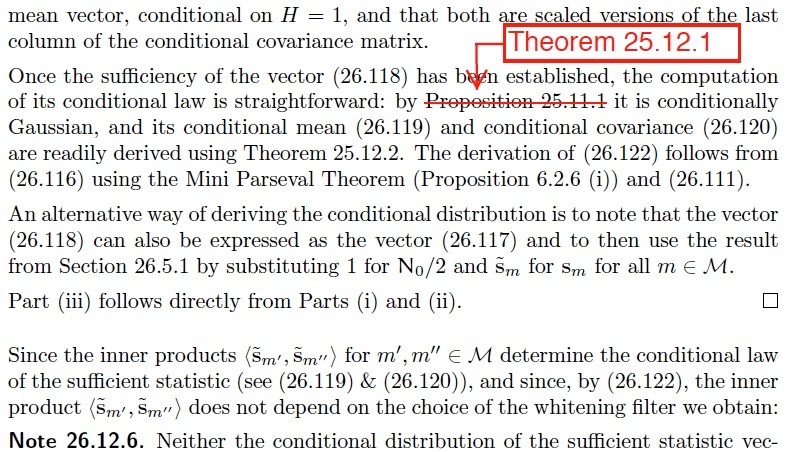

Page 608: delete Exercise 26.3
Making this intuitive argument rigorous is more subtle than I thought. Just delete the exercise.


Page 608: Exercise 26.4
In Part (i) the assumption should be about f0 and f1 (not f1 and f2).
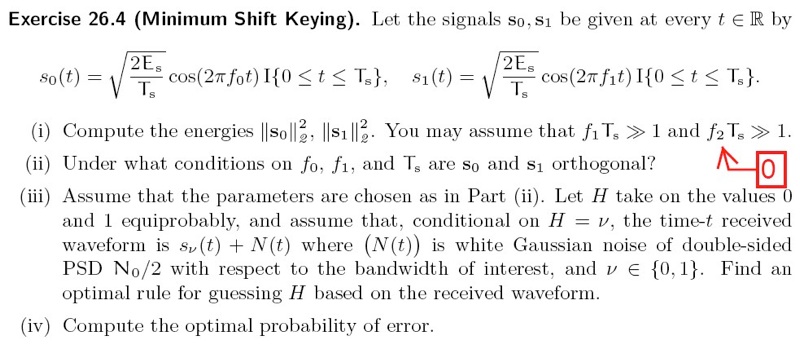

Page 628: equation block below (27.63)
Page 628, equation block following (27.63): a factor of one-half is missing from the RHS of the last equation.
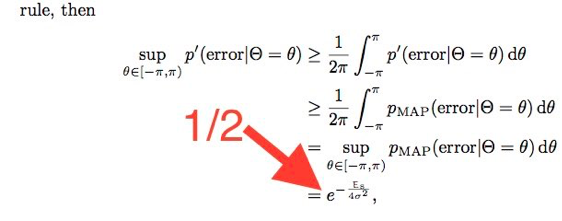

Page 637: replace “n” with “k”
In the line above Equation (28.15), the set should be {1,...,k} and not {1,...,n}.


Page 648: delete prime in (28.45)
The condition in (28.45) should be that “l” (unprimed) be an integer between 1 and n.


Page 659: parity-check matrix
On page 659, Definition 29.3.6, the number of rows of the parity-matrix is arbitrary. The matrix can be any binary matrix with N columns. Thus, replace “K x N matrix H” with “binary matrix H with N columns”.


Page 692: Theorem A.3.3 — S is positive
The hypothesis to Theorem A.3.3. on Page 692 in the appendix should be that “S is positive” and not merely nonnegative.


Page 692: Theorem A.3.3
The dummy variable on the RHS of (A.40) and in the equation following it should be "s" and not "\xi".
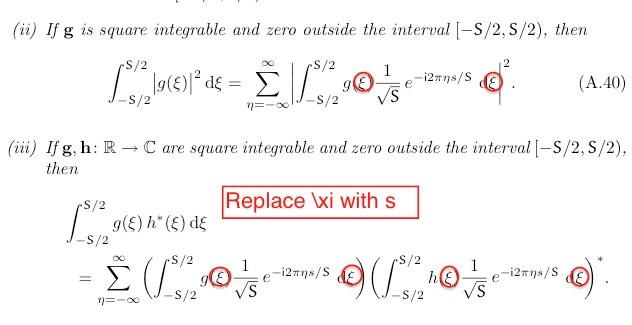

Page 693: Note A.3.5
Replace the dummy variable "\xi" with "s".


Page 706: List of Symbols
Two typos:
1. In the definition of the evaluation of a function, the name of the function should be “g”.
2. In the definition of an equivalence class the name of the function should be “u”.
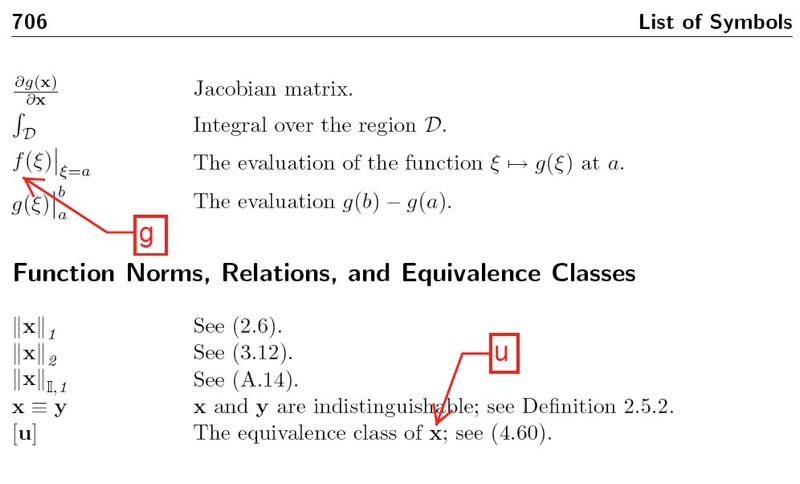

Page 715: missing page number for an index entry
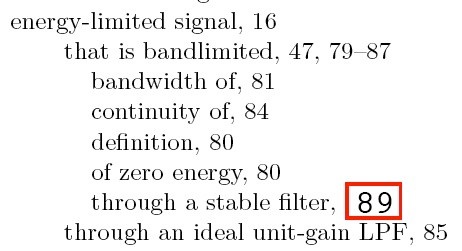

To report a typo, click here.
Last modified: Fri Nov 8 07:27:52 CET 2019
